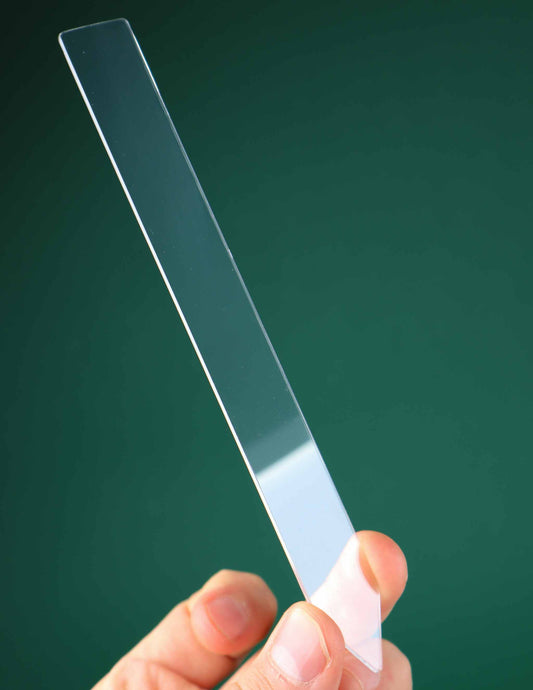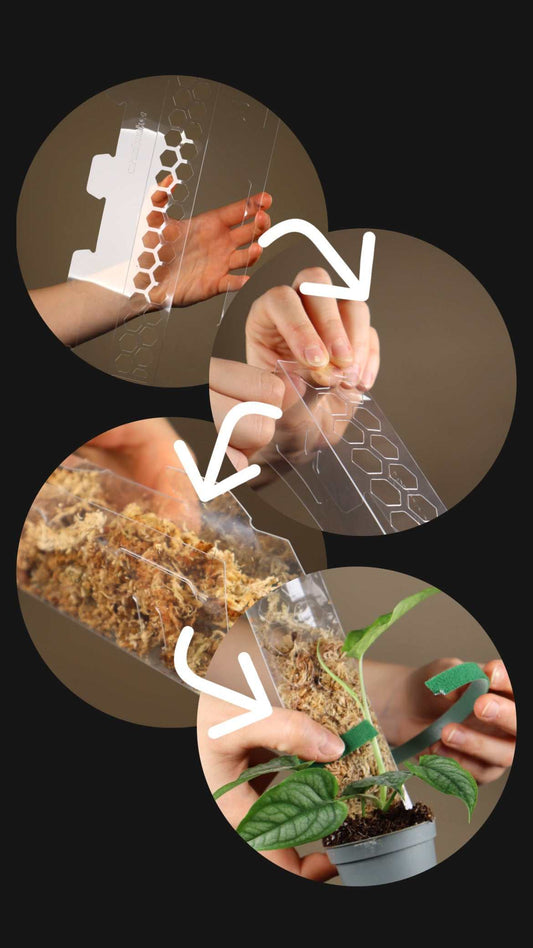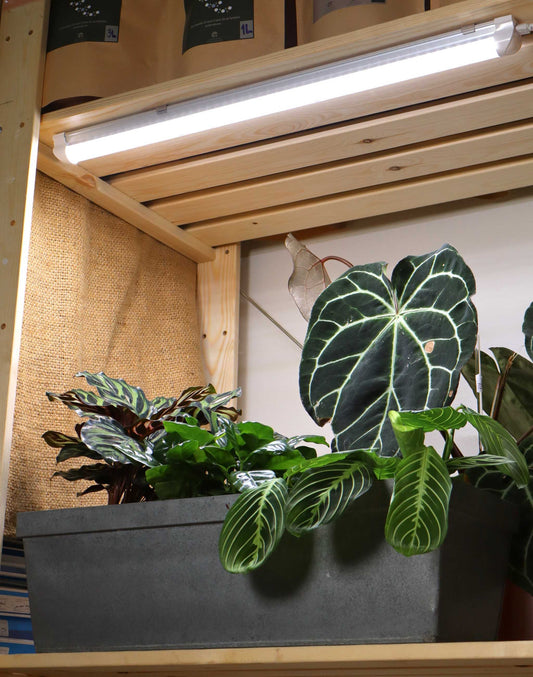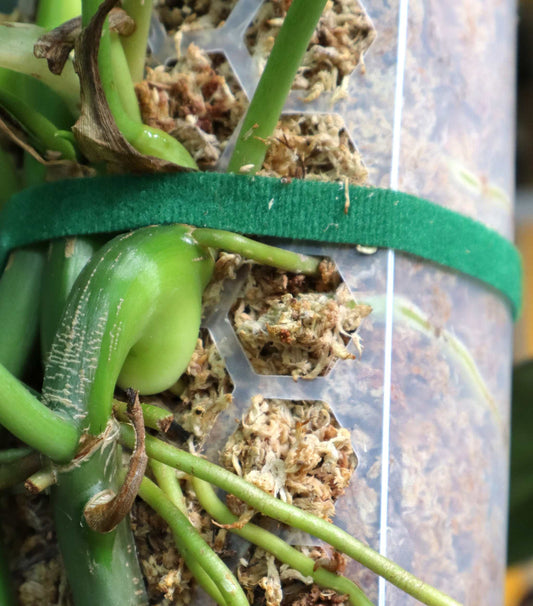Share
How to grow tropical plants indoors?
The idea to create your own indoor jungle emerged after many trips to tropical countries. The indoor climate in our homes often resembles the tropical climate in temperature and humidity, but what is often lacking is sufficient light. Humidity can be adjusted through the right choice of soil and watering techniques, but light is a bigger challenge for those who want to grow tropical plants.
However, many plants from the tropics have adapted to lower light levels, which means that some species can thrive in a bright room indoors. The plants that grow naturally in shady environments are often ground plants or epiphytes (plants that live on other plants), such as Monstera, Alocasia, Philodendron and Anthurium. These plants live naturally in the lower layers of the rainforest, where the light is weaker, and their growth is instead mostly affected by temperature and humidity. Therefore, they are particularly well suited for growing indoors without additional plant lighting.
Often grouped under the common suborder aroids , these plants have become very popular in recent years. The large, showy leaves give a tropical feel and do not necessarily require large investments in either money or time.
Stratification in tropical forests

Plants in tropical forests are constantly fighting for sunlight and are adapted to different light levels depending on which layer they grow in:
- Highest layer: Consists of single, very tall trees that reach 45-55 meters and sometimes over 70 meters. The trees can withstand extreme temperatures and strong winds.
- The canopy: Here are most of the large trees, usually 30-45 meters high. The layer captures much of the sunlight and houses the greatest biodiversity.
- The middle layer: Contains smaller trees and shrubs. Here, the leaves are often larger to absorb as much light as possible, and the wildlife is rich.
- Ground layer: Receives only 2% of sunlight, making it mostly inhabited by shade-tolerant plants such as Monstera and Philodendron. This is where many of our popular houseplants come from.
Light requirements for different plants
In order to grow these plants indoors, it is important to understand their light needs. We recommend measuring the light level in the place where the plant will stand. This can be done easily with a light metering app for the phone. A good guideline for shade plants, such as aroids, is a PPFD (Photosynthetic Photon Flux Density) of 150-200 µmol/m²/s. This is often possible to achieve with a bright room or cheap LED grow lights.
For more light-demanding plants such as tropical fruit trees (eg papaya tree and banana plant) we recommend a higher PPFD level of around 600 µmol/m²/s , which can usually be achieved with 100W plant LED lights. In our shop we have managed to get a papaya tree to bear fruit with as little as 70W plant lighting. This roughly corresponds to the energy consumption of an older light bulb and is therefore quite economical to operate. One tip is to use plant lighting at night, when electricity prices are lower.
LED grow lights - The key to success
Although some tropical plants can do without additional light during the summer months, we always recommend using plant lighting in winter when daylight is insufficient. We use and recommend plant-specific LED lights from, for example , SANSI for best results. LED lighting is energy efficient and produces the right spectrum for optimal growth.
Grow your own tropical fruits
The interest in tropical plants does not only cover the low maintenance ground plants, growing your own tropical fruit trees indoors is also becoming increasingly popular. There are few things that beat the feeling of harvesting your own papaya or banana right from your living room. These trees are light-demanding and originate from the middle layer in the rain forest, which means they require stronger lighting than the usual ground plants.
Whether you want to create a lush jungle or harvest your own fruits, there is a solution for every type of plant. With the right light and a little care, you can have tropical plants thrive indoors all year round!












